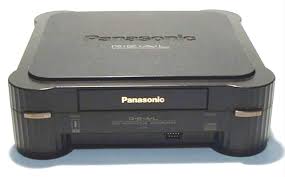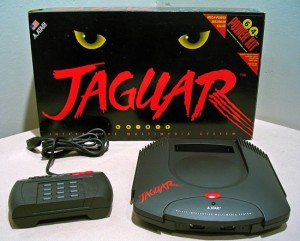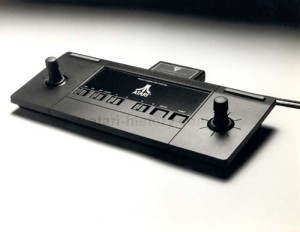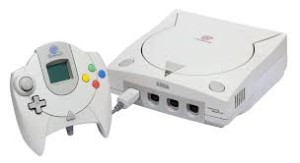Five Consoles Of Christmas Past
In life, like online, sides must sometimes be taken and upheld in the face of outrageous misfortune and pwn’s from afar.
For many, those lines are drawn when a console is purchased, the investment a statement of whose side you’ll be defending during the next round of handbag bashing. Others have the luxury of owning both sides of the argument, a compliment of games and subscription services lending them Hobson’s choice when it comes to which platform they choose to snipe your noob ass on.
But when even a handheld comes in the same price bracket as a proper big-boy console, and as equipped – if somewhat software lacking – to take advantage of everything the connected world of todays gaming experience has to offer, it seems there is no wrong choice to make when selecting a platform to game from.
History, however, tells a different tale…
5: Panasonic 3DO
 Need For Speed was all this console ever gave the world, but for that one thing alone we should remember fondly the abortive failure that was Panasonic’s stab at filling the spaces beneath their tellys.
Need For Speed was all this console ever gave the world, but for that one thing alone we should remember fondly the abortive failure that was Panasonic’s stab at filling the spaces beneath their tellys.
Brainchild of EA founder Trip Hawkins, a $599 asking price at launch caused many to ignore the thrills behind a pseudo-leather Lambo wheel; and with limited third party support and a paucity of exclusives it didn’t take long for it to fade into obscurity beneath the shadows of the more established companies of Sega and the like.
A number of re-inventions of the shape and some quality titles such as Road Rash and Super Street Fighter 2 Turbo left it with a decent looking back catalogue to look out for when sourcing stock on eBay.
4: Atari Jaguar
I had one of these and my god was it a pain; from the big-assed pad to that cd-loader add-on, the whole thing, feeling like a third world child, had a hand in its construction and graphics that first introduced me to the term motion sickness.
64-bits and $249.99 at launch, the lies began before you’d even got it out the box. Two 32-bit innards masquerading as one 64-bit wonder meant nothing to anyone outside programming circles but the rot had set in, the gamers had been lied to, and forever should the legacy be nothing more than a machine of two halves that was an arse to program for and whose add-on made it seem like Atari were expressing where their consoles future lay…
Displaying a dedication to screwing the whole thing up for all of us, Atari get a second mention for an almost legendary piece of dumbass that most will have never even heard of it.
Optimistically called the Atari 2000 this hookerbot- monikered mistake was the company’s first attempt at bringing some home gaming goodness to the housebound and hermit in us all. Only ever released as a prototype to test markets, the ingenious design that saw the controllers welded into the console itself meant a broken controller required a whole new console purchase and two player games were all elbows and tears.
As ‘no sh*t’ a moment of clarity as we all see it to be now, that one tiny redesign gave us the Atari 2600 and the future E.T. film tie-in that destroyed the company themselves.
2: Pioneer Laser Active
For a generation so used to music being stored on various sources and transferred through magic and Apple, it’s difficult to get across quite how ludicrous a laser disc was – especially when trying to defend a twelve inch LP to the same confused child’s face.
But an entire gaming system whose key selling feature was to bring you the latest and greatest games on something even easier to render unplayable with a single scratch than your current collection of Janis Joplin albums, and at a vastly inflated cost, coupled with an interesting dalliance with plug-ins that allowed the owner chance to play Sega CD and Mega Drive games along with TurboGrafx releases, did nothing to help justify the $970 launch price.
In what some may consider an effort ahead of its time Pioneer were aiming for an all-in-one approach to this console, making it the centre to all your home entertainment needs in a time when for most that meant hooking it up to the telly and maybe plugging the stereo’s speakers in the back when your friends came over and you wanted to show off.
1: The Dreamcast
Put down that noose and extinguish those torches; this is an article about failed consoles, remember, and as much as we all get a warm fuzzy glow whenever we remember the first time Jet Set Radio’s police came legging it after our graffiti tagging selves you cannot deny the simple truth of its demise, and thus top spot in this list.
Launched at a not unreasonable $199 price tag and with such seminal titles as Soul Calibur, four dimension fighter Power Stone, and 2D titan Marvel Vs Capcom to give credence to its two dimensional capabilities, these three fighting games represent just how well thought out the launch truly was. Why have one beat-em-up at launch, as is tradition, when you can have three? You want Sonic, but in a world he can move all round in? Have Sonic Adventure and don’t look too closely at the shonky visuals and clipping issue. Sega Rally takes care of the racers out there, and the rest can be as batshit insane as Pen Pen Triicelon as you like.
All of it filled with graphics an entire frigging notch above everything we’d come to expect on a home console, with enough left over to silence any PC diehards out there still clinging to graphics as a measure of gaming superiority.
Being unable to manufacture enough consoles to fulfil pre-orders marked the beginning of the Dreamcasts life-span, cruelly cut-short and injured throughout by internet issues, third party support, and lack of DVD player that their rival was offering gratis with their own next-gen chipsets and glee.
It would take the Xbox to bring to fruition everything the Dreamcast had started to sew, and to this end it never truly became a failed console; more a console that failed to become everything it promised and tried so hard to become.





